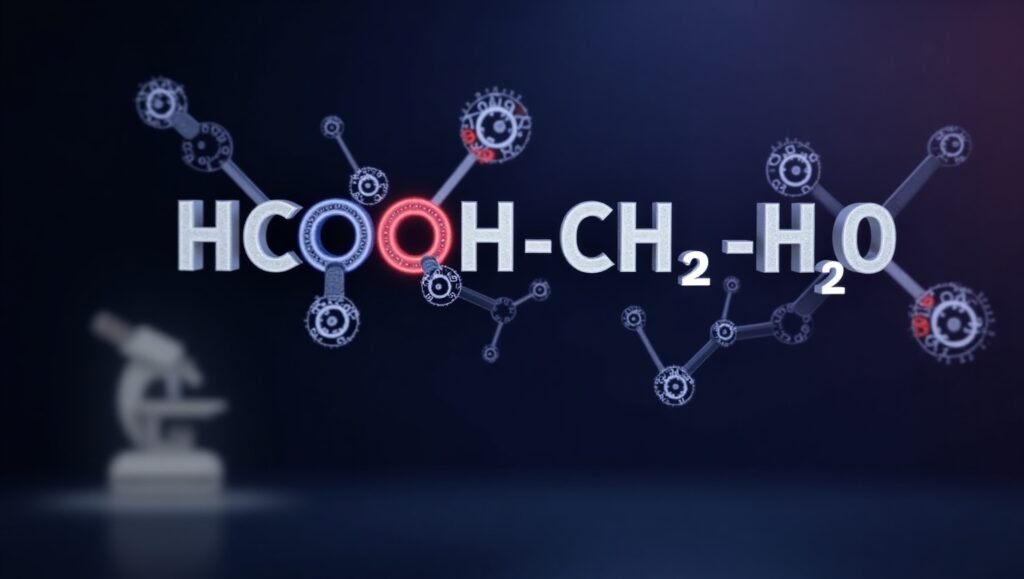Introduction
Organic chemistry is built on complex reactions between molecules that form the basis of biological, industrial, and environmental processes. Among these reactions, the interaction of compounds like hcooch ch2 h2o is especially important because it highlights how esters, water molecules, and methylene groups behave in real chemical environments. This article explains each component, how they react, and why this reaction matters academically and industrially.
1. Understanding the Components
1.1 What is HCOOCH?
HCOOCH represents an ester-like organic compound. Esters are chemical substances formed when acids react with alcohols. They are widely used in:
-
Fragrances
-
Solvents
-
Food flavorings
-
Plastic manufacturing
Their behavior is mainly determined by the presence of carbonyl groups and oxygen atoms, which makes them reactive during hydrolysis and other organic reactions.
1.2 The Role of CH₂ (Methylene Group)
CH₂, known as the methylene group, is one of the most essential fragments in organic chemistry. It appears in almost all organic chains and structures. CH₂ units help build:
-
Longer hydrocarbon chains
-
Polymers
-
Fatty acids
-
Numerous industrial chemicals
Because CH₂ is versatile, it contributes to chain growth and stability during organic reactions.
1.3 H₂O – The Universal Solvent
Water (H₂O) plays the central role in chemical reactions. It acts as:
-
A solvent
-
A reactant
-
A medium for chemical equilibrium
In reactions involving esters like HCOOCH, water usually participates in a process called hydrolysis, where the molecule breaks down into smaller, more stable products.
2. How HCOOCH, CH₂, and H₂O React Together
2.1 Ester Hydrolysis
When hcooch ch2 h2o are present together, the most common reaction that occurs is hydrolysis. Hydrolysis of an ester works like this:
Ester (HCOOCH) + Water (H₂O) → Alcohol + Acid
Here is what happens step-by-step:
-
Water acts as a nucleophile.
-
It attacks the carbonyl carbon of the ester.
-
A temporary intermediate compound forms.
-
The ester bond breaks.
-
Alcohol and acid are produced.
This type of reaction is common in both acidic and basic conditions.
2.2 Breakdown of Organic Components
During the hydrolysis, CH₂ groups help stabilize the molecular structure and influence the reaction pathway. The presence of methylene groups helps determine how fast the reaction proceeds and what products form.
3. Practical Applications of This Reaction
3.1 Industrial Applications
Ester–water reactions play an important role in several industries:
-
Detergent production
-
Perfume manufacturing
-
Plastic and polymer creation
-
Flavor and fragrance development
By controlling hydrolysis, industries can create desired chemical products with specific properties.
3.2 Biological Applications
In living organisms, CH₂ groups appear everywhere: in amino acids, fatty acids, DNA bases, and metabolic pathways. Hydrolysis reactions help the body break down food, generate energy, and create new molecules.
3.3 Laboratory and Research Importance
Students commonly study ester hydrolysis in laboratories. It helps them understand:
-
Reaction mechanisms
-
Nucleophilic attack
-
Molecular structure
-
Chemical equilibrium
The reaction involving hcooch ch2 h2o is a perfect example for academic understanding.
4. Why This Reaction Is Important
4.1 Foundation of Organic Chemistry
Understanding these components helps students strengthen their concepts about:
-
Covalent bonding
-
Functional groups
-
Reaction patterns
-
Product formation
4.2 Real-World Chemical Processes
Industries use hydrolysis reactions daily to produce medicines, coatings, adhesives, and synthetic materials.
4.3 Educational Significance
This reaction is frequently included in exams, assignments, and laboratory experiments because it demonstrates the fundamental behavior of organic molecules.
Conclusion
The interaction of hcooch ch2 h2o demonstrates one of the most essential principles of organic chemistry — ester hydrolysis. HCOOCH acts as the ester, water drives the reaction by breaking bonds, and CH₂ contributes to molecular stability. Understanding how these components react provides valuable insight into both theoretical chemistry and real industrial applications. Whether you are a student, researcher, or someone exploring chemistry topics, this reaction helps build a strong foundation for advanced learning.



